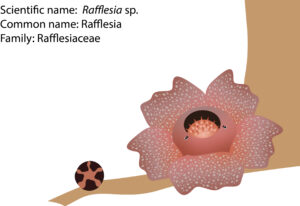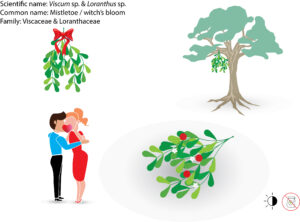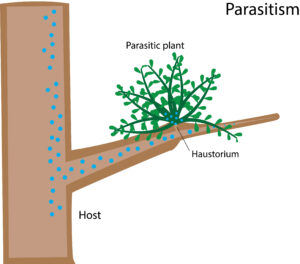
The stories of the biggest flower in the world, Rafflesia
The largest flower in the world, Rafflesia (Rafflesiaceae), however, is from a small obligate endo-holoparasitic Asian plant genus. Although famous for its huge flowers, it’s a rare species and only lives in a small and special area that is high island endemism. This genus is classified as a member of Malpighiales, and native to tropical Southeast Asia, mainly found in Indonesia, Malaysia, and the Philippines. There are roughly 30 to 37 Rafflesia species that are […]
Read More
Mistletoe – a parasitic plant is the symbol of Christmas
Mistletoes are a diverse group of aerial parasitic plants, particularly obligate hemiparasitic with a worldwide distribution. It is usually found in the temperature forest along the Pacific rim of southern South America. It is a successful and interesting plant that parasitize trees and shrubs, establishing xylem connections with their hosts to obtain water and other xylem-borne nutrients. Mistletoe grows on a range of trees including willow, apple, and oak trees. It is also found on […]
Read More
They are expert in stealing – parasitic plants
It doesn’t sound rationale that there are plants that do not make their own foods and living as parasites on other plants. As autotrophs, plants are supposed to live on their own because plants, as most people would assume, are entitled to their abilities to photosynthesis, which is the process of making foods with light and air. However, nature never fails to challenge people’s perceptions with exceptions. In fact, there are about 4500 species of […]
Read More